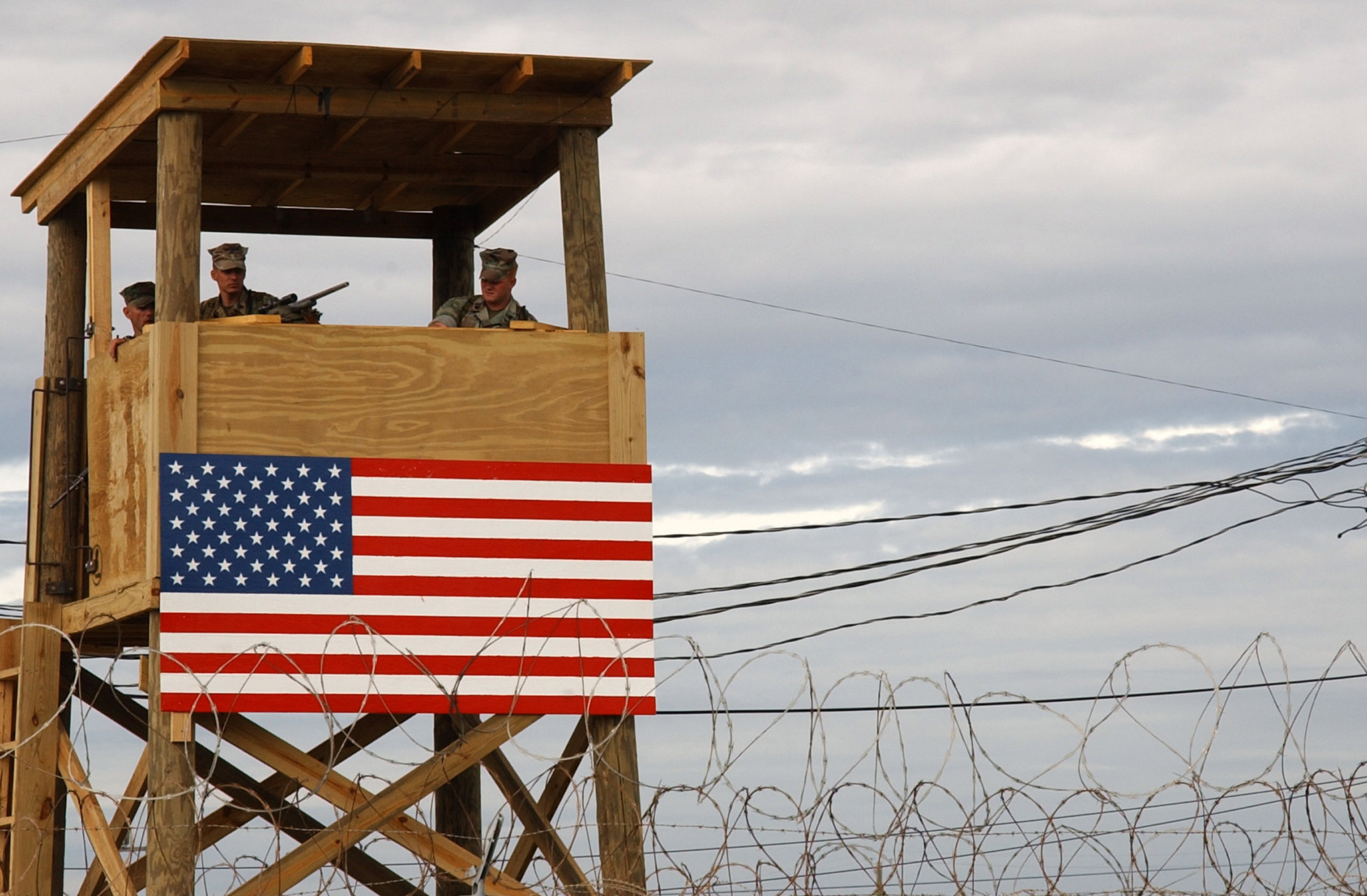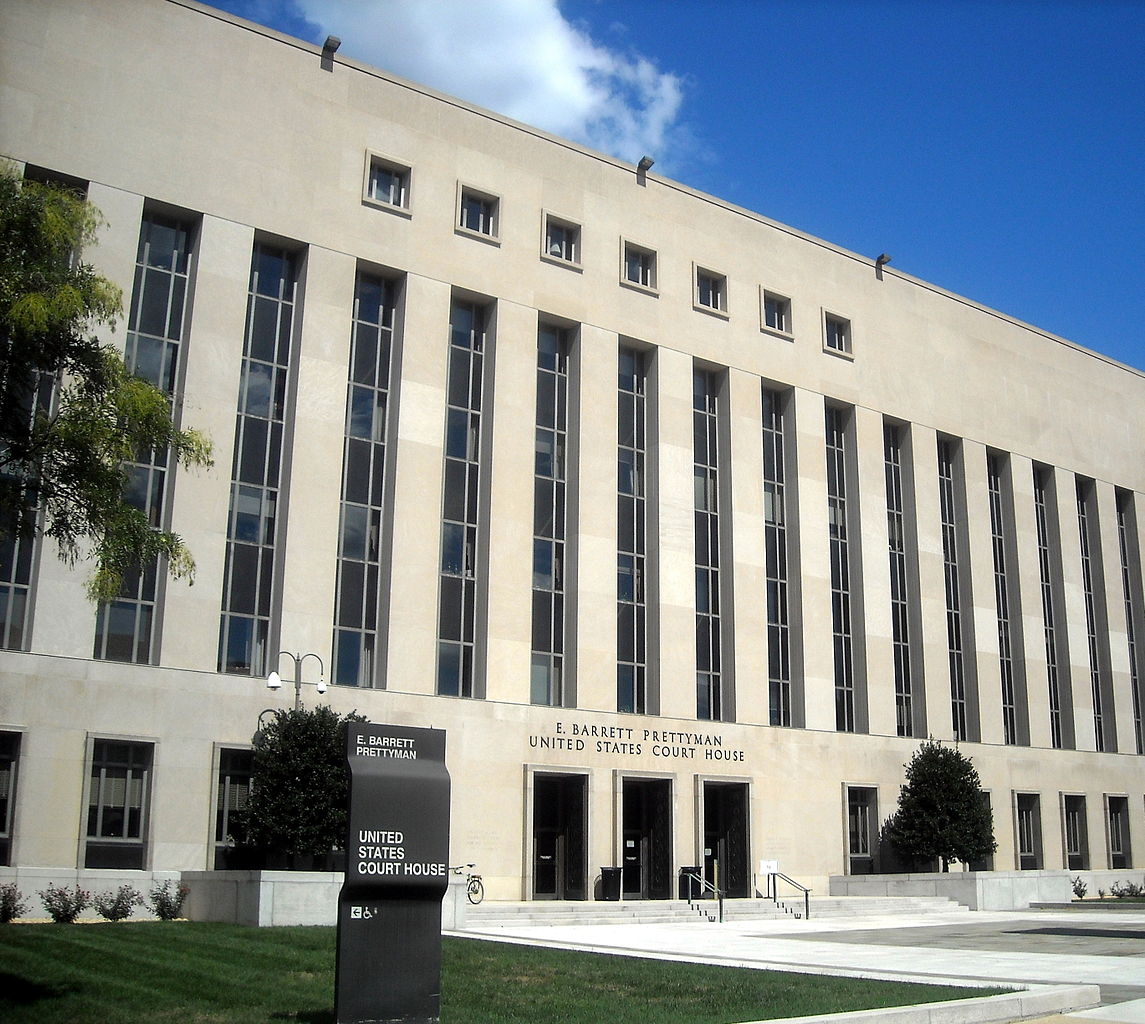Al-Qahtani Repatriated to Saudi Arabia Following Judge’s Grant of His Motion for a Mixed Medical Commission
Al-Qahtani’s own Mixed Medical Commission was mooted by his repatriation, but his case may have opened up a new avenue for Guantanamo detainees.

Published by The Lawfare Institute
in Cooperation With

On March 7, the Biden administration transferred Mohammed al-Qahtani—who was initially detained on suspicion that he may have been a would-be 20th Sept. 11 hijacker—to Saudi Arabia. This move came after the Periodic Review Board’s (PRB’s) recommendation on Feb. 4 that al-Qahtani be repatriated to Saudi Arabia after determining that continued “detention of the detainee (was) no longer necessary to protect against a continuing significant threat to the security of the United States.” As conditions of his transfer, the PRB recommended that al-Qahtani participate in a rehabilitation program that includes mental health care and “implementation of a comprehensive set of security measures.” In support of its recommendation, the board cited its confidence in Saudi Arabia’s rehabilitation program and its ability to monitor the detainee after his completion of the rehabilitation program as well al-Qahtani’s deteriorated mental health condition and unavailability of family support.
The PRB’s decision to transfer al-Qahtani followed a landmark decision by Judge Rosemary Collyer of the U.S. District Court for the District of Columbia. On March 6, 2020, Collyer granted al-Qahtani’s motion for a Mixed Medical Commission—a three-person medical panel comprising two members from a “neutral country” and “one U.S. army medical officer” whose purpose is to determine whether a sick and wounded “enemy prisoner of war” or “retained personnel” is eligible for repatriation. Although the Biden administration’s repatriation of al-Qahtani mooted Collyer’s order requiring the government to facilitate the Mixed Medical Commission, her ruling is worth examining given that the approval of the commission for a Guantanamo Bay detainee was unprecedented. Her ruling, therefore, may influence other detainees to file similar motions.
Background
Al-Qahtani was captured in Afghanistan in January 2002 and transferred to Guantanamo Bay one month later, where he was tortured, according to public statements made by U.S. government officials. According to a medical expert who conducted medical examinations of him beginning in 2015, al-Qahtani was already suffering from severe psychiatric disabilities prior to being detained at Guantanamo Bay, but his mental and physical condition deteriorated further after being tortured. The medical expert concluded that al-Qahtani could not receive effective treatment while in custody at Guantanamo Bay because of his distrust of medical and mental health professionals there and his need for familial support as part of his treatment and therefore that he should be repatriated to Saudi Arabia.
In 2016, after holding a hearing, the PRB denied al-Qahtani’s transfer to psychiatric custody in Saudi Arabia finding that al-Qahtani remained a national security threat based on his history of terrorist activities. Al-Qahtani did not provide additional information about whether his psychiatric conditions influenced those activities. In 2017, al-Qahtani filed a motion in the D.C. District Court arguing that he was entitled to a Mixed Medical Commission pursuant to Section 3-12 of the Army Regulation 190-8. This section lays out the procedures for a Mixed Medical Commission, which, as described previously in Lawfare, determines detainees’ eligibility for repatriation, including those who qualify based on their designation as “enemy prisoners of war” (“a term co-extensive with the definition of prisoner of war set forth in Article 4 and 5 of the Third Geneva Convention”), or “retained personnel” as defined by the Army Regulation.
Although the Geneva Conventions are not applicable in habeas proceedings based on the Military Commissions Act of 2006, under Al Warafi II, the portions that have been incorporated into domestic law, including as a part of Army Regulation 190-8, must be analyzed by courts. Determining whether individuals should be considered “enemy prisoner[s] of war” or “retained personnel” is essential in determining not only whether the individuals are entitled to a Mixed Medical Commission but also whether they are entitled to “humane treatment (by the U.S. government) as required by the Geneva Conventions” under Army Regulation 1-5. More specific requirements enumerated in Article 110. Articles 112 and 113 are also relevant because they discuss Mixed Medical Commissions, which are described further in the commentary to the Third Geneva Convention.
Jurisdictional Issues
The threshold question before the district court was whether it had jurisdiction to hear the case. Al-Qahtani posited two theories of jurisdiction under habeas per 28 U.S.C. § 2241(e) and the All Writs Act, 28 U.S.C. § 1651. Judge Collyer determined that the court had jurisdiction to hear the case because al-Qahtani’s request for review by a Mixed Medical Commission did sound in habeas based on the court’s precedent. Alternatively, under the All Writs Act, the court could compel a Mixed Medical Commission evaluation of al-Qahtani to provide the court with the necessary medical facts to reach a legal conclusion on his habeas petition.
The Court’s Jurisdiction Over Qahtani’s Claim Under 28 U.S.C. § 2241(e)
As discussed previously on Lawfare, following Boumediene v. Bush, under 28 U.S.C. § 2241(e), courts have jurisdiction over habeas actions filed by enemy combatants but are denied any “jurisdiction to hear or consider any [non-habeas] action against the United States … relating to any aspect of the detention, transfer, treatment, trial, or conditions of confinement of an alien” held as an enemy combatant. The government argued that the court did not have jurisdiction to hear al-Qahtani’s case under 28 U.S.C. § 2241(e) because al-Qahtani’s motion for a Mixed Medical Commission was non-habeas given that it was not an order of release or one challenging his conditions of confinement. Rather than seeking a motion for release, the government asserted, al-Qahtani sought a “military proceeding that might result in his release,” which is “extraordinary relief too far removed from habeas’ traditional remedy of release.” Such a motion, the government argued, is for conditional, potential, or speculative release and cited five cases in support of this assertion. Al-Qahtani, by contrast, argued that he is “entitled to review by a Mixed Medical Commission” and that such a commission “will provide the factual basis necessary for the court to find that he is entitled to release,” thereby making his motion for a Mixed Medical Commission a request for release.
The court found that the government’s cited cases did not uphold the outcome the government sought in part because the government overlooked the nondiscretionary nature of Army Regulation 190-8. The government recognized that al-Qahtani sought an end to his detention but argued that based on the “Supreme Court’s statement that habeas might not be an available remedy in cases that do not truly implicate the duration or conditions of confinement,” al-Qahtani’s motion was not sound in habeas because of its probabilistic and discretionary nature. The holding in these cases, “a particular claim that may be brought under 42 US Code Section 1983 need not be brought first in habeas,” did not foreclose al-Qahtani’s motion as not being sound in habeas. The court also rejected the government’s claim that a Mixed Medical Commission is like a motion for a PRB review, which the D.C. District Court in Salahi v. Obama found to be a non-habeas motion because of its probabilistic and discretionary nature. The court there relied on the Supreme Court decisions in Skinner v. Switzer and Davis v. U.S. Sentencing Comm’n in determining what the scope of habeas relief is and that the scope does not include probabilistic claims. The al-Qahtani court emphasized that the PRB had discretion in considering Salahi’s case as did the secretary of defense in subsequently approving or denying the PRB’s decision, whereas a Mixed Medical Commission evaluation entails no discretion either in the professional determination regarding whether release is warranted or in carrying out the release itself. The commission’s only role is to make findings about the health of an individual that then serve as the basis for whether the individual should be released. Therefore, the court established that there was no precedent precluding the expansion of habeas relief to include al-Qahtani’s motion for a Mixed Medical Commission, not least given the nondiscretionary nature of the commission’s decision-making process.
Finding that the government overlooked the district court’s decision in Aamer I, the court agreed with al-Qahtani in finding his claim sound in habeas. The court noted that while the Supreme Court in Boumediene v. Bush held that Congress’s jurisdiction stripping of the courts’ ability to hear the habeas claims of detainees under 28 U.S.C. § 2241(e)(2) was unconstitutional, it has hesitated to define the scope of habeas relief in cases following Boumediene. The U.S. Court of Appeals for the D.C. Circuit and the D.C. District Court, by contrast, have defined what constitutes habeas more expansively by including conditions of a detainee’s confinement as well as legitimacy or duration.
Although Boumediene v. Bush did not specifically describe what habeas signifies, it did acknowledge that honoring a writ of habeas means providing prisoners with a “meaningful opportunity to demonstrate that he is being held pursuant to the ‘erroneous application or interpretation’ of relevant law.” For a habeas court to have sufficient authority, “it must conduct a meaningful review of both the cause for detention and the Executive’s power to detain.” Finally, a habeas court has the power to conditionally release the detainee although other remedies are also an option.
The district court cited Aamer I in finding that habeas claims are not limited to “so-called core habeas claims.” The court generally identified the scope of habeas to include challenges to the fact or duration of detention as being at the core of habeas, but it found challenges to conditions of confinement also sound in habeas. The Aamer I court held that a writ of habeas entails an individual claiming that his custody “in some way violates the law, and he may employ the writ to remedy such illegality.” Such custody issues that are sound in habeas include “the fact of detention, duration of detention, place of detention, or conditions of detention.” The court also pointed to Aamer II, which al-Qahtani cited in his brief as bolstering his jurisdictional argument, in upholding a motion for a Mixed Medical Commission as a request for release and thereby falling under its habeas jurisdiction. In that case, the D.C. District Courtupheld a “request for review by a Mixed Medical Commission (as) a request for ‘release pursuant to domestic law (Army Regulation190-8) and those portions of an international accord that it incorporates (the Third Geneva Convention).’”
The Court Can Compel a Motion for a Mixed Medical Commission Under the All Writs Act
Al-Qahtani argued that the court should issue “the orders necessary to develop a factual record on which it can exercise its habeas jurisdiction” by relying on the All Writs Act, 28 U.S.C. § 1651, which empowers courts to “issue all writs necessary or appropriate in aid of their respective jurisdictions and agreeable to the usages and principles of law.” The government, by contrast, argued that the All Writs Act “does not enlarge the Court’s habeas jurisdiction or provide it with an independent basis for jurisdiction in the first instance” and therefore cannot “serve as the basis for sweeping such extraordinary remedies under habeas’ umbrella.”
The court, agreeing with al-Qahtani, found that it could compel a Mixed Medical Commission evaluation under the All Writs Act that would “provide the court with the necessary medical facts to reach a legal conclusion on his habeas petition” and develop a record that would allow for “meaningful review of the (government’s) failure to repatriate him.” Because the court lacked “the necessary expertise to evaluate al-Qahtani’s physical and psychological condition to determine whether he qualifies for medical repatriation under Army Regulation 190-8,” it needed a Mixed Medical Commission to conduct an examination in order to be able “to evaluate al-Qahtani’s habeas petition fully.”
The court dismissed the government’s argument that the All Writs Act does not expand the court’s habeas jurisdiction “nor provide it with an independent basis for jurisdiction” by finding that the All Writs Act gave courts the tools necessary to “dispose of the matter as law and justice require.” In support of its finding of jurisdiction under the act, the court cited Al Odah v. United States, in which the D.C. District Court found that the act allowed for an extension “[of] the right to counsel for Guantanamo detainees who filed habeas petitions,” and Al-Joudi v. Bush, which ordered “the government to provide information to counsel regarding a detainee’s physical condition.”
Merits: Al-Qahtani’s Classification as an “Other Detainee” and His Right to a Mixed Medical Commission
Having established jurisdiction, the court then turned to the merits of the case: whether al-Qahtani was entitled to a Mixed Medical Commission under Army Regulation 190-8. That determination turned on whether he met the definition of “enemy prisoner of war” or “retained personnel.” The court found that Army Regulation 190-8 applied to al-Qahtani because of his status as “other detainee,” which the regulation defined as a person “[in] the custody of the U.S. Armed Forces who [has] not been classified as an [enemy prisoner of war], [retained person], or [civilian internee],” who “shall be treated as [an enemy prisoner of war] until a legal status is ascertained by competent authority.” The court found that his designation as an “enemy combatant,” a term not found in the Army Regulation, did not preclude al-Qahtani from being designated as an “other detainee” solely for the purposes of the regulations. Therefore, the court held that “other detainees,” who are wounded and sick, have the right to seek repatriation depending on the results of their medical commission evaluation. To apply for a medical commission evaluation, the court, in applying a plain reading, found that the applicant must fulfill one of four requirements listed under Section 3-12(h) of Army Regulation 190-8. Al-Qahtani, who submitted a written request for a commission, fulfilled one of the four requirements under Section 3-12(h) and was therefore entitled to the commission. The court did not consider al-Qahtani’s alternative request that the court grant injunctive relief or the government’s stance that al-Qahtani’s motion was, in fact, a request for permanent injunction.
At the heart of the issue was whether the Combatant Status Review Tribunal’s designation of al-Qahtani as an “enemy combatant” precluded him from being designated as an “other detainee” for the purposes of Army Regulation 190-8. Al-Qahtani argued that he should be treated as a prisoner of war because he has not been designated as falling under the other categories. Additionally, because “enemy combatant” is a term not found in the Army Regulations, he should be designated as an “other detainee” under the regulation. The government countered these arguments by claiming that his designation as an “enemy combatant” barred him from being designated as an “other detainee.”
The court ultimately agreed with al-Qahtani, citing Aamer II and Al Warafi II in support of its conclusion that an enemy combatant designation does “not render Army Regulation 190-8 inapplicable” to an individual. In Al Warafi II, the court considered whether an “individual detained as an ‘enemy combatant’ at Guantanamo Bay qualified as a ‘medical personnel’ under Army Regulation 190-8 and should be repatriated.” Aamer II was relevant to al-Qahtani’s case because of the district court’s consideration regarding whether a Guantanamo detainee is precluded from the application of Army Regulation 190-8 if he was designated as an “enemy combatant.” The court, although finding that Aamer did not qualify as an “other detainee,” nevertheless noted that “if an ‘enemy combatant’ designation removes Guantanamo detainees from the coverage of Army Regulation 190-8, there would have been no need for the Al Warafi II court to conduct such an analysis.” Based on Al Warafi II, the court concluded that al-Qahtani “meets the criteria as an ‘other detainee’ in Army Regulation 190-8” and is therefore entitled to a Mixed Medical Commission.
***
The Biden administration has thus far transferred three detainees in pursuing its goal of closing Guantanamo Bay, a rate that some critics have viewed as too slow. Judge Collyer’s opinion and order granting al-Qahtani’s motion for a Mixed Medical Commission has already inspired other detainees to make similar requests, including Ammar al-Baluchi and Mustafa Ahmed al-Hawsawi. So even if al-Qahtani’s own Mixed Medical Commission was mooted by his repatriation, his case may have opened up another avenue for closure advocates to pursue.





